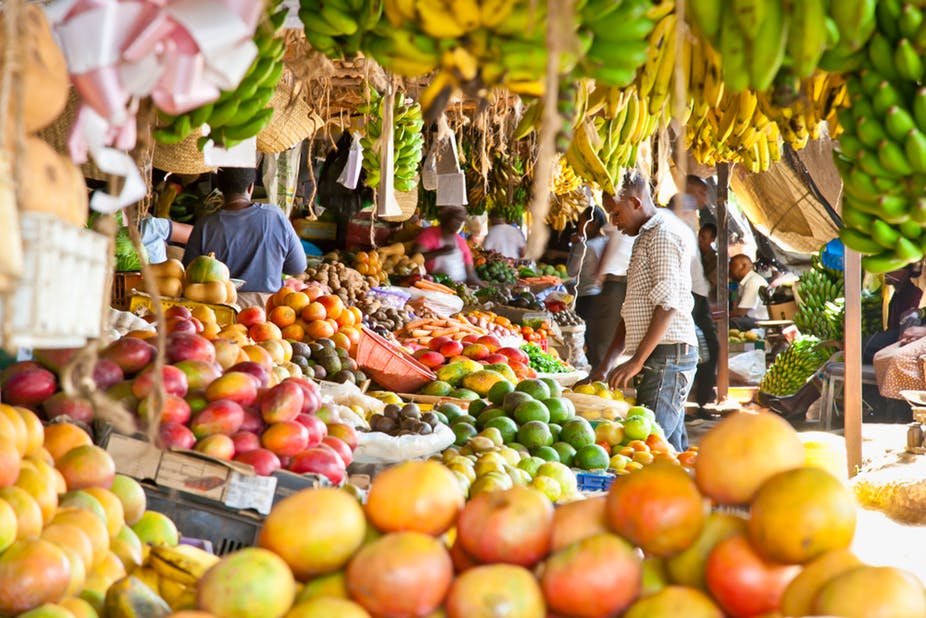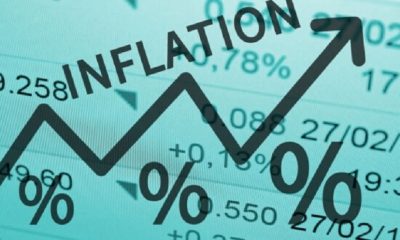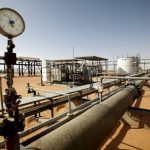Economy
Sticky Food Prices Limit Headline Inflation Moderation at 16.05%
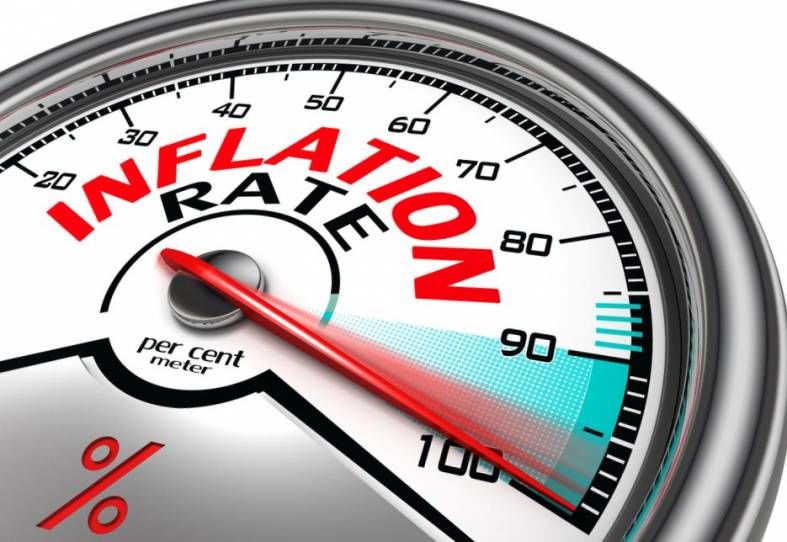
By Cordros Research
Yesterday, the National Bureau of Statistics (NBS) released the Consumer Price Index (CPI) report for the month of July, showing that Nigeria’s inflation rate increased by 16.05 percent y/y, 5 bps lower than the 16.10 percent recorded in June, marking the sixth successive y/y decline in the headline index.
Broadly in line with our forecast, albeit 10 bps ahead of Bloomberg’s compiled average estimate of 15.95 percent, the inflation figure is consistent with the sense that the base effect driven moderation expected at the beginning of the year has waned.
Again, the fact that the headline index came above consensus, as has been the trend thus far this year, further corroborates the case that prices remain sticky downward. Good to mention, however, the month-on-month price increase of 1.21 percent, 37 bps lower than June’s 1.58 percent, is the second consecutive m/m moderation recorded thus far in 2017, and the lowest since January (1.01 percent).
On average, from end-2016 level, month-on-month inflation has increased by 1.50 percent, 22 bps higher than the 1.28 percent average recorded in the seven months to December 2016.
While it may be argued that the persisting inflationary pressure again supports the central bank’s Monetary Policy Committee’s (MPC) case of holding the line on its policy stance, we think the Committee’s subsequent decisions will largely be influenced by its considerations of inflation volatility and expectation, rather than inflation itself.
As shown in a recent study by the apex bank, “Modelling Inflation Rate Volatility in Nigeria with Structural Breaks”, inflation level in an economy may not really be what matters strictly but inflation volatility, and fiscal policies importantly affect the latter.
The study guides that inflation only causes high inflation volatility only in a situation where monetary policy is dominated by fiscal policy and the government deficit cannot be predicted. That partly confirms the MPC’s persistent call on the fiscal authority to pursue complementary policies that support fiscal-monetary policy harmony.
Downplaying the likelihood of a rate hike, despite identified likely risks to banking system liquidity amid anticipated fiscal injections over H2-2017, the MPC clearly noted that additional tightening will widen the income gap, weigh down aggregate consumption, and further constrain credit to the real sector of the economy.
Strengthening the case for a rate cut, on the other hand, a critical assessment of the Committee’s considerations in its last meeting reveals that, unlike in May – where members expressed uncertainty around key economic activities particularly food production – expectation is for a robust harvest season capable of subduing the rate of price increase on the food component, which is expected to combine with continued moderation in core inflation to ease the pressure on the headline index.
That said, we suspect a rate cut is unlikely to be earlier than November when output growth would have comfortably returned to the positive value, inflation rate would have decelerated close to the empirically established 10 percent – 12.5 percent threshold for Nigeria, and exchange rate stability would have been relatively consolidated.
Notably, consistent with observed trend this year, all classification of Individual Consumption by Purpose (COICOP) which aggregates the headline index increased during the month under review, with sizable price increases reported in the following major divisions: oil and fats, bread and cereals, meat, coffee, tea and cocoa, vegetables, fish, potatoes, yam and other tubers, and garments and clothing materials and other articles of clothing.
Food Index Pressure Persists
Food inflation increased by 20.28 percent y/y (vs. 19.91 percent in June), with the import component declining for the eighth consecutive month to hit a 17-month low of 14.08 percent.
Meanwhile, m/m rate in this segment, at 1.52 percent (vs. June’s 1.99 percent), continued the moderation it started in June, consistent with the 0.15 percent m/m drop in the average prices reportedly paid by households across various rural and urban markets and informal arrangements, according to the NBS Selected Food Price Watch for July, driven by notable declines in the prices of egg (-3.14 percent), bread (-1.90 percent), chicken (-1.30 percent), gari (-1.15 percent), and rice (-1.10 percent). Year-to-date, the food index has increased by 14.4 percent, compared to 11.6 percent same period last year.
Core Inflation Sustains Slower Rate of Increase
Core inflation increased at a slower pace for the eight consecutive month, rising by 12.20 percent in July, versus 12.50 percent in June, with the highest increases reported in clothing materials and articles of clothing, furniture and furnishing, books and stationary, medical services, glassware, tableware & household utensils, accommodation services and household textiles.
On a m/m basis, prices rose at a slower rate in this segment at 1.00 percent (1.32 percent the previous month), benefitting from reported decreases of 0.3 percent, 2.36 percent, and 6.08 percent in average national prices of premium motor spirit, kerosene, and diesel to N145.9/litre, N280.49/litre, and N197.62/litre respectively.
Food Prices Remain Fundamental to Headline Inflation
Clearly, the direction of headline inflation for the rest of the year will be largely driven by food prices. Save for potential risk of negative surprises, specifically with regards foreign exchange, and the possible increase in electricity tariff, we expect continued moderation in the core component.
Drilling down events vis-à-vis food prices, results being reported in most areas vis-à-vis the dry season harvest are generally favourable.
The raining season has commenced with near-normal timing and cumulative rainfall across most of the country, in line with earlier guidance for the rainy season through September/October for average to above-average cumulative precipitation.
In its latest report, FEWS NET revealed that outside of the northeast, staple harvests that begin as late as October in northern areas are likely to be more robust than last year’s, due to increased access to inputs as well as strong production incentives for farmers due to very high staple food prices, in addition to increased government funding and support. Granted, incidence of flooding has been reported in most parts of the country but not primarily on the back of unusually heavy downpour.
More so, affected areas were largely residential not farmlands.
That said, for the rest of 2017, we maintain our position that except monthly inflation rate stays below the 1.5 percent average recorded since the beginning of the year, the likelihood of the headline index reaching 20 percent by December cannot be ruled out.
To be specific, we forecast the headline inflation rate in 2017 to average 16.10% (bull case) or 17.73 percent (bear case).
Meanwhile, we look for the CPI recording a marginal decline to 16.03 percent y/y and 1.00 percent m/m in August.
Economy
Customs Street Depletes by N22bn as Investors Liquidate Financial, Energy Stocks

By Dipo Olowookere
The first trading session of this week at Customs Street ended with a marginal 0.03 per cent loss on Monday following profit-taking in financial and energy sectors.
The counters closed lower during the session as investors re-caliberated their portfolios due to the instability in the global financial markets.
The All-Share Index (ASI) of the Nigerian Exchange (NGX) Limited was down yesterday by 33.72 points to 104,529.62 points from 104,563.34 points and the market capitalisation depleted by N22 billion to N65.685 trillion from N65.707 trillion.
Business Post reports that the banking index crumbled by 1.99 per cent, the insurance sector depreciated by 0.36 per cent, and the energy counter lost 0.19 per cent, while the consumer goods space improved by 0.08 per cent, with the industrial goods and commodity indices closing flat.
It was observed that despite the disappointing outcome, the market breadth index was positive after the bourse ended with 28 price gainers and 24 price losers, representing a strong investor sentiment.
International Energy Insurance lost 9.76 per cent to trade at N1.48, Consolidated Hallmark shed 8.33 per cent to N2.75, Japaul went down by 7.46 per cent to N1.86, Chams dropped 6.98 per cent to N2.00, and Neimeth eased by 6.94 per cent to N2.68.
Conversely, Abbey Mortgage Bank rose by 9.95 per cent to N6.74, UPDC gained 9.82 per cent to sell for N3.13, Guinea Insurance increased by 9.52 per cent to 69 Kobo, VFD Group jumped by 9.46 per cent to N96.00, and Sovereign Trust Insurance soared by 9.41 per cent to 93 Kobo.
Yesterday, a total of 428.2 million shares worth N10.5 billion exchanged hands in 14,583 deals versus the 380.0 million shares worth N10.1 billion traded in 10,791 deals last Friday, implying a rise in the trading volume, value, and number of deals by 12.68 per cent, 3.96 per cent and 35.14 per cent, respectively.
The activity chart was topped by Access Holdings with 56.0 million equities sold for N1.2 billion, Zenith Bank traded 55.4 million stocks valued at N2.8 billion, Fidelity Bank transacted 39.0 million shares worth N725.9 million, UBA exchanged 33.2 million equities valued at N1.0 billion, and GTCO traded 31.0 million stocks for N2.1 billion.
Economy
Oil Market Rises on Tariff Exemptions, Boost in China’s Crude Imports
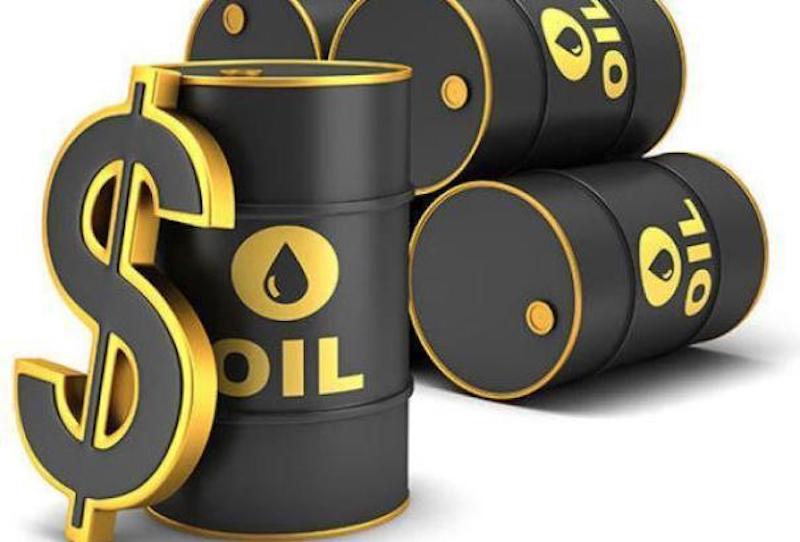
By Adedapo Adesanya
The oil market was slightly up on Monday on the back of exemptions for some electronics from US tariffs and data showing a sharp rebound in China’s crude imports in March.
During the trading session, Brent crude futures improved by 12 cents or 0.2 per cent to $64.88 per barrel and the US West Texas Intermediate (WTI) crude futures grew by 3 cents to trade at $61.53 a barrel.
The President of the United States, Mr Donald Trump, last Friday granted exclusions from steep tariffs on smartphones, computers, and some other electronic goods imported largely from China.
It was the latest in a series of policy announcements that imposed tariffs and then walked them back, spurring uncertainty for investors and businesses.
President Trump later said on Sunday he would announce the tariff rate on imported semiconductors in the coming days.
For the Chinese imports, the exclusion of the tech products applies only to President Trump’s reciprocal tariffs, which climbed to 125 per cent this week as the prior 20 per cent duties on all Chinese imports that he said were related to the US fentanyl crisis remain in place.
China increased its tariffs on US imports to 125 per cent last Friday, hitting back against the American president’s decision to further raise duties on Chinese goods and increasing the stakes in a trade war that threatens to upend global supply chains.
These developments raise concerns that the trade war could weaken global economic growth and dent fuel demand.
China’s crude oil imports in March rebounded sharply from the previous two months and were up nearly 5 per cent from a year earlier boosted by Iranian oil and a rebound in Russian deliveries.
The Organisation of the Petroleum Exporting Countries (OPEC) said in a monthly report on Monday that global oil demand will rise by 1.3 million barrels per day in 2025, down by 150,000 barrels per day from last month’s forecast, citing trade tariffs among the reasons.
Top market analysts like Goldman Sachs and UBS have also cut their forecast.
Goldman Sachs expects Brent to average $63 and WTI to average $59 for the remainder of 2025, with Brent averaging $58 and WTI $55 in 2026 while UBS reduced its Brent forecasts by $12 a barrel to $68.
The US could stop Iranian oil exports as part of President Trump’s plan to pressure Iran over its nuclear programme.
However, Iran and the US held talks in Oman on Saturday and agreed to reconvene next week.
Economy
Nigeria’s Oil Production Drops to 1.40mb/d in March
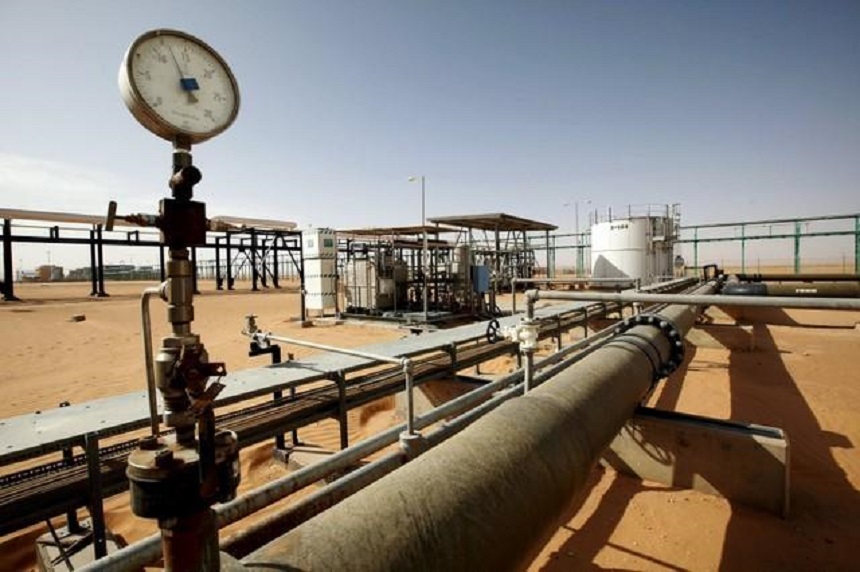
By Adedapo Adesanya
Nigeria’s oil output decreased by 4.1 per cent to 1.40 million barrels per day in March from 1.46 million bpd in the previous month, according to the Organisation of the Petroleum Exporting Countries (OPEC).
This drop means Nigeria has now produced below its OPEC target for the second consecutive month and far below its 2.06 million targets contained in the 2025 national budget.
This decline could be attributed to attacks on pipelines in Rivers State that led to the declaration of state of emergency and the suspension of democracy in the oil-rich state by President Bola Tinubu.
Last month, Mr Tinubu announced the suspension of Governor Siminilayi Fubara and the State House of Assembly over political crisis in the state. This occurred after an oil facility in the state was attacked. He then appointed a retired military officer, Mr Ibokette Ibas as the sole administrator of Rivers State.
Despite the decline, Nigeria remains the largest oil producer in Africa, surpassing Algeria and Congo, which produce 909,000 barrels per day and 263,000 barrels per day, respectively.
However, according to data sourced from secondary sources, OPEC said Nigeria produced 1.51 million barrels per day in March as against 1.54 million barrels per day in February.
OPEC’s report also showed that crude production by the wider OPEC+ fell in March by 37,000 barrels per day to 41.02 million barrels per day due in part to reductions by Nigeria and Iraq.
“Total DoC crude oil production averaged 41.02 mb/d in March 2025, which is 37 tb/d lower, m-o-m,” OPEC said.
On April 12, the Nigerian Upstream Petroleum Regulatory Commission (NUPRC) said the country’s oil production decreased to 1,400,783 barrels per day in March.
Although oil output dropped in March, NUPRC said the average crude oil production is 93 per cent of the 1.5 million barrels per day quota set for Nigeria by OPEC.
NUPRC adds condensates to its estimates, which are exempted by OPEC in its calculations.
On April 4, the OPEC and its allies decided to increase oil production by 411,000 barrels per day in May — amid declining oil prices.
OPEC also cut its 2025 global oil demand growth forecast on Monday for the first time since December, citing the impact of data received for the first quarter and trade tariffs announced by the United States.
OPEC forecasts that world oil demand would rise by 1.30 million barrels per day in 2025 and by 1.28 million barrels per day in 2026. Both forecasts are down 150,000 barrels per day from last month’s figures.
US President Donald Trump’s trade tariffs as well as a plan for higher output by OPEC+ have put downward pressure on oil prices this month and raised concern about economic growth.
In its monthly report report, OPEC lowered its world economic growth forecast this year to 3.0 per cent from 3.1 per cent and reduced next year’s to 3.1 per cent from 3.2 per cent.
Last month, OPEC said trade concerns would contribute to volatility but had kept forecasts steady, saying the global economy would adjust. However, that appears to have changed with recent developments.
-

 Feature/OPED5 years ago
Feature/OPED5 years agoDavos was Different this year
-
Travel/Tourism9 years ago
Lagos Seals Western Lodge Hotel In Ikorodu
-

 Showbiz2 years ago
Showbiz2 years agoEstranged Lover Releases Videos of Empress Njamah Bathing
-

 Banking7 years ago
Banking7 years agoSort Codes of GTBank Branches in Nigeria
-

 Economy2 years ago
Economy2 years agoSubsidy Removal: CNG at N130 Per Litre Cheaper Than Petrol—IPMAN
-

 Banking2 years ago
Banking2 years agoFirst Bank Announces Planned Downtime
-

 Sports2 years ago
Sports2 years agoHighest Paid Nigerian Footballer – How Much Do Nigerian Footballers Earn
-

 Technology4 years ago
Technology4 years agoHow To Link Your MTN, Airtel, Glo, 9mobile Lines to NIN





